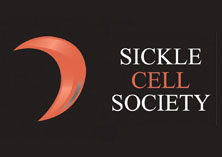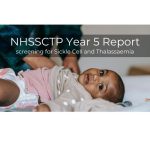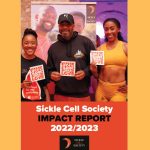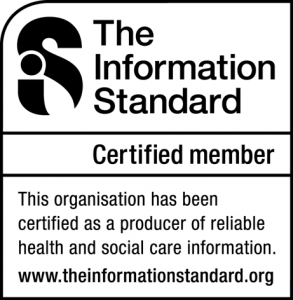This is a report on external research. It is not endorsed by the Sickle Cell Society and does not form part of our Information Standard-accredited information
The Combined Contraceptive Pill and Women with Sickle Cell Disorders
– Dr Wai Yoong, Dept of Obstetrics & Gynaecology, Royal Free Hospital; Miss Susan Tuck, Consultant.
Contraception plays an important part in the health care of women with Sickle Cell Disorders, as pregnancy, planned or otherwise, often leads to significant maternal and fetal complications. 38% of pregnant women with Sickle Cell Disorders suffer severe sickling crises and 23% give birth prematurely. The maternal mortality in pregnant women with Sickle Cell Disorders is three times that of normal pregnant women.
Discounting sterilisation which is permanent, the combined oral contraceptive pill is the most effective and versatile method of reversible contraception. We know that the oestrogen hormone contained in combined pill is associated with an increased risk of thrombosis (clots). We also know that, rarely, the process of sickling itself, can be associated with a small likelihood of clotting problems and thrombosis.
Understandably, many drug companies in the UK advice against the use of combined pill in women with sickle cell disorders, for fear that this may worsen any clotting problems, as well as add to the risk of sickling crises.
It must be stressed, however, that this recommendation is based on theoretical caution rather than on scientific fact. There is little conclusive evidence that women with sickle cell disorders who use the combined pill are many more prone to thrombosis compared to sickle cell sufferers who do not use it. In countries, such as the USA, where the conditions of sickle cell disorders are well know, doctors are happy to prescribe the combined pill for sufferers.
We recently undertaken a preliminary study to investigate if women with sickle cell disorders who use the combined pill really have a higher risk of thrombosis compared to those using progestogen only contraception (eg depo injections) or non hormonal contraception (eg condoms). This study compares the clotting markers in these different groups of women and the comparison of the levels of these markers reflects the relative risk of thrombosis.
We were able to recruit 22 women to take part in the study. Since the New Year a further 21 women have agreed to take part. With samples from over 40 volunteers, the statistics and findings from the whole study should be quite convincing.
Our early data suggests that the sickling process is associated with mild clotting abnormalities, but using the combined oral contraceptive pill does not seem to make this any worse. These are just our preliminary results and further expert analysis of the final data will be needed before any conclusive report is produced.
Acknowledgement: We would like to thank all the ladies who were kind enough to participate in our study. We would also like to thank the Sickle Cell Society for providing financial support to this pilot study.









